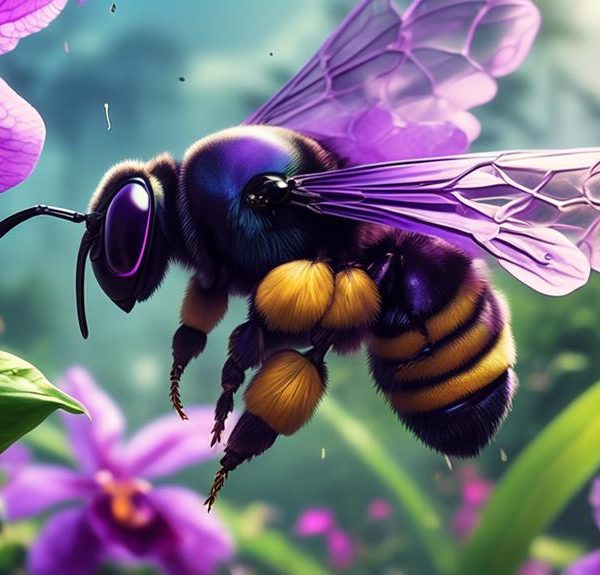Fathom the fascinating world of Carpenter Bee memory, an unexplored realm unraveling surprising parallels with human cognitive abilities.
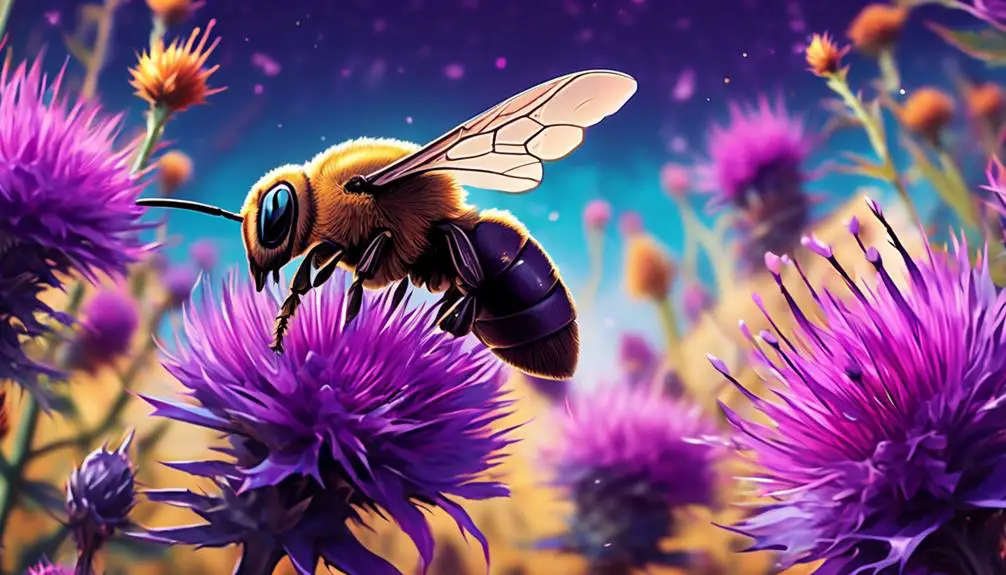
Carpenter Bee Memory
Have you ever pondered the accuracy of the theory suggesting that carpenter bees, like their cousin honeybees, possess an incredible capacity for memory?
It's a fascinating concept, considering these insects' tiny brain size compared to ours.
Current research is starting to chip away at the mysteries of the carpenter bee's mind, revealing intriguing insights into their cognitive abilities.
It turns out, these buzzing creatures might have more in common with us than you'd initially think.
Stick around if you're curious to explore what science is uncovering about these remarkable insects.
Key Takeaways
- Carpenter bees have a remarkable capacity for learning, recall, and memory.
- They can remember the location of their nests and food sources, displaying long-term and contextual memory.
- Carpenter bees challenge traditional understanding of insect intelligence and possess a functional and sophisticated memory system.
- Understanding the memory capabilities of carpenter bees is crucial for their conservation and for balancing their ecological benefits with potential damage to human-made objects.
Understanding Carpenter Bee Biology
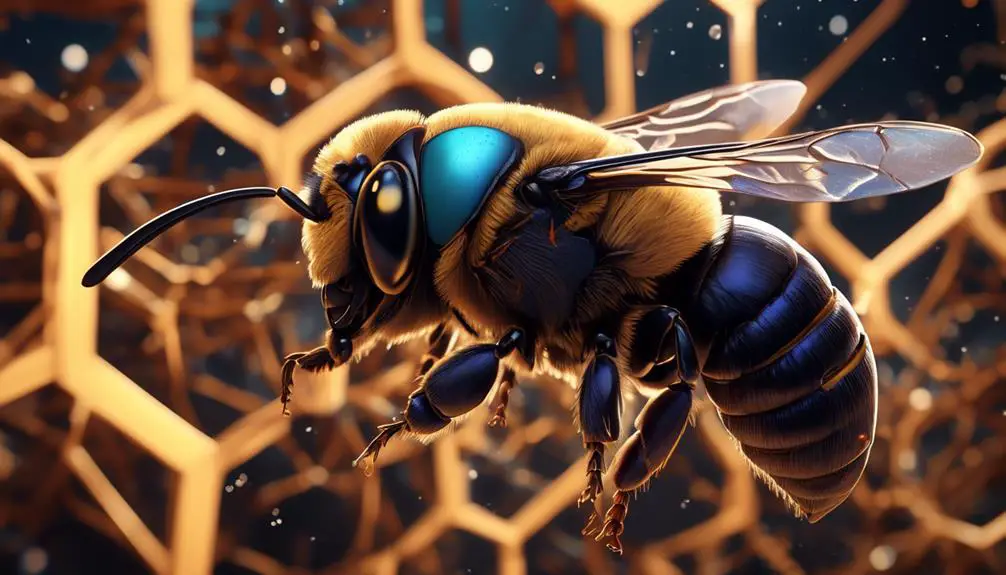
To truly grasp the intricacies of carpenter bee memory, it's crucial to first delve into the biology of these fascinating insects. As you may know, carpenter bees are solitary insects, meaning they don't live in colonies like honeybees. They're named for their behavior of boring into wood to make galleries for the rearing of their young.
You'd be surprised to learn that these bees have a relatively large brain for an insect, particularly the regions associated with learning and memory. They also possess excellent vision, which aids them in navigation and foraging. These capabilities highlight their cognitive prowess, underscoring their complex memory systems.
Let's dissect their lifecycle. Female carpenter bees lay their eggs in the wooden tunnels they've constructed. The larvae then feed on a mixture of pollen and nectar, termed 'bee bread,' until they mature. This lifecycle is a testament to the bee's remarkable adaptability and resourcefulness, traits that are closely entwined with their memory capabilities.
The Memory Capabilities of Bees
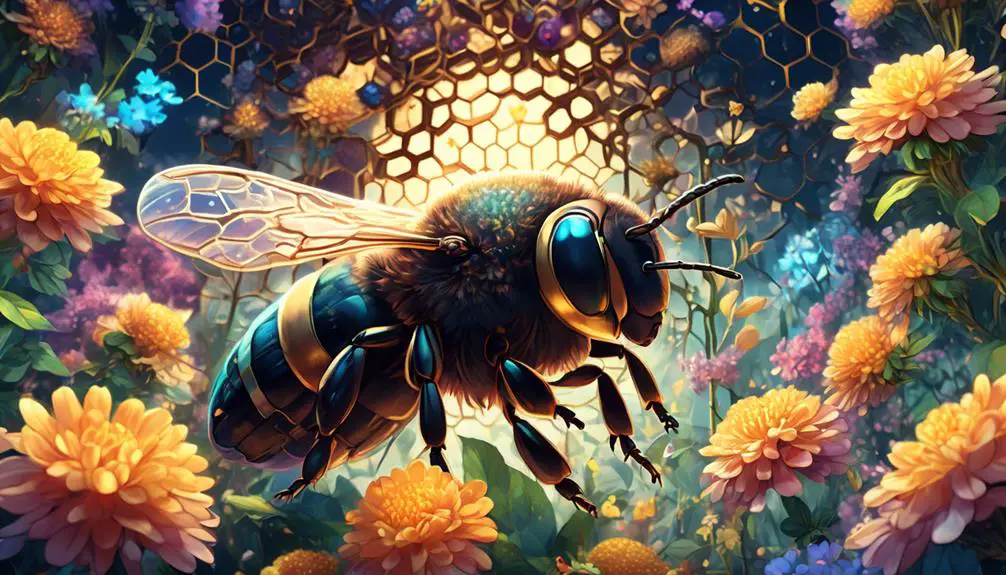
In dissecting the memory capabilities of bees, you'll find that these insects exhibit a striking capacity for learning and recall, far surpassing what their small size might suggest. Their brains, although only the size of a sesame seed, contain about one million neurons, proving that complex processes can occur in small packages.
Their memory capabilities are evident in their ability to recognize and remember colors, shapes, and patterns. They can also remember the location of their hive and flowers with abundant nectar. Their cognitive abilities extend to the ability to learn and remember routes between their hive and food sources, a skill known as "route memory".
Here's a table to give you a clearer picture:
Attribute | Details | Impact |
|---|---|---|
Color Recognition | Bees can remember specific colors that indicate food sources | Enhances foraging efficiency |
Pattern Recognition | Bees can recognize and remember patterns, such as the arrangement of petals on a flower | Assists in identifying productive flowers |
Route Memory | Bees learn and remember the best routes from the hive to food sources | Maximizes energy efficiency during foraging |
These findings underscore the astonishing cognitive abilities bees possess, demonstrating their value not just as pollinators, but as subjects of neurobiological research.
Research on Carpenter Bee Memory
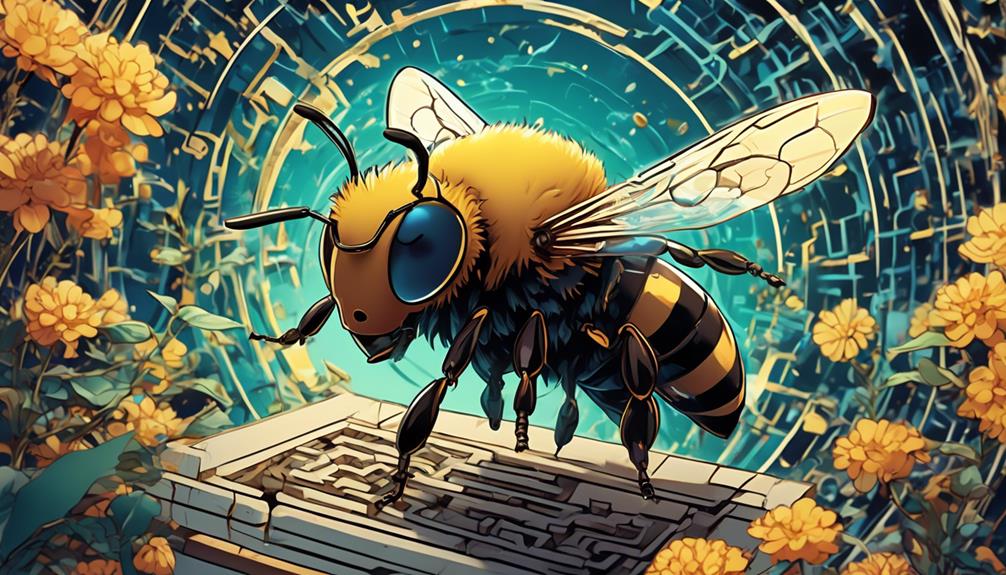
Delving into the realm of Carpenter Bee memory, you'll find extensive research shedding light on their remarkable cognitive abilities. Studies show these bees can remember the location of their nests and food sources, even after long periods of absence. They're not just operating on instinct; they're displaying a level of spatial memory that's quite impressive.
Recent research has focused on how Carpenter Bees learn and remember floral traits. In a study published in the Journal of Experimental Biology, bees were conditioned to associate certain colors with food rewards. Remarkably, they remembered these associations even after 24 hours. This indicates a form of long-term memory at work.
Furthermore, Carpenter Bees exhibit a phenomenon known as 'contextual memory'. They can remember specific details about their environment, like landmarks or the presence of predators. This allows them to navigate complex environments and make decisions based on past experiences.
In a nutshell, the research shows that Carpenter Bees have a memory system that's not only functional, but sophisticated. They can learn, remember, and make decisions based on their memories—a testament to the cognitive prowess of these buzzing creatures.
Implications for Insect Cognition
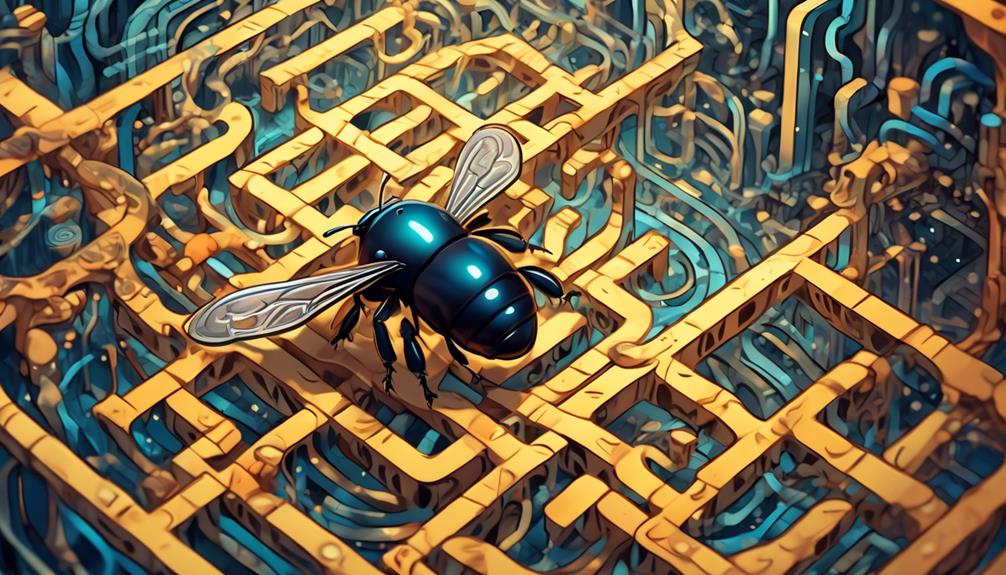
Given these insights into Carpenter Bee memory, it's clear that we're just scratching the surface of insect cognition. The complex memory patterns exhibited by these creatures challenge our traditional understanding of insect intelligence. It's a testament to the remarkable cognitive abilities we're only beginning to uncover in the insect world.
To give you a clearer picture, let's consider the following table:
Insect Cognition Area | Implication for Carpenter Bee |
|---|---|
Spatial Memory | Bees remember locations of food sources |
Temporal Memory | Bees recall timing of flower nectar production |
Social Memory | Recognition of nest mates |
Sensory Memory | Use of visual and olfactory cues |
These cognitive abilities aren't isolated. They're interconnected, contributing to the bee's survival. Spatial memory helps them navigate back to food sources, while temporal memory enables them to optimize their foraging. Social memory aids in colony cohesion and sensory memory allows them to react appropriately to environmental cues. The intricate workings of the Carpenter Bee's brain provide a fascinating glimpse into the vast potential of insect cognition, challenging our assumptions and expanding our knowledge of the natural world.
Carpenter Bees and Human Interaction
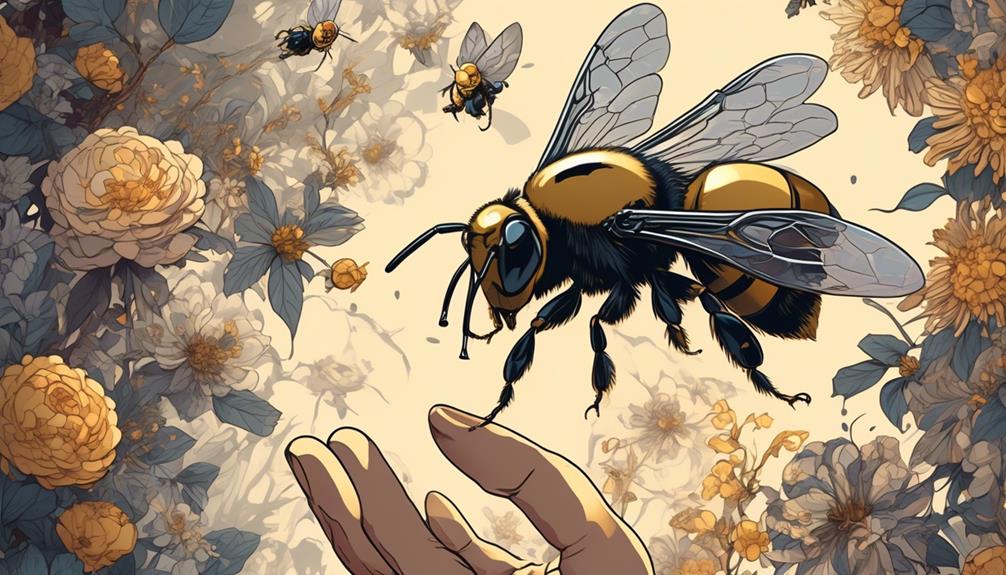
While the cognitive capacities of Carpenter Bees are indeed intriguing, it's equally important to examine how these creatures interact with humans, shedding light on their role in our ecosystems and the implications for conservation efforts. You might be surprised to learn that Carpenter Bees are crucial pollinators, playing a significant role in the fertilization of various plant species, many of which are integral to human agriculture.
However, their interaction with humans isn't always positive. With their natural inclination to bore into wood, Carpenter Bees often cause structural damage to human-made objects, particularly untreated lumber in buildings and other wooden structures. This can lead to significant repair costs, making them a nuisance to homeowners.
In terms of conservation, it's vital to balance the ecological benefits these insects provide with their potential detriment to human infrastructure. Public education plays a key role in this, as understanding the importance of Carpenter Bees can influence human behavior towards these creatures, potentially reducing unnecessary extermination.
Conclusion
You've delved into the world of carpenter bees, learning about their biology and surprising memory capabilities. Studies reveal they're more than just wood-boring pests, offering insights into insect cognition.
By understanding their memory, we can enhance our interaction with them, promoting co-existence rather than conflict.
These revelations serve as a reminder that even small creatures like carpenter bees have complex cognitive abilities, pushing us to rethink our perspective on the insect world.

